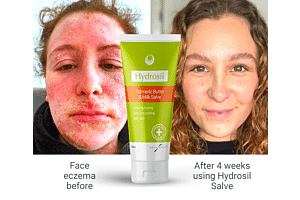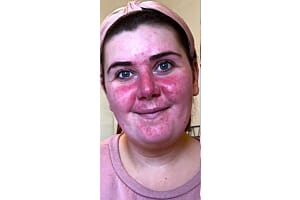Could you spot the signs of frostbite if you saw it? You might think frostbite is only something to worry about if you are scaling Everest, but incidences of frostbite are on the rise in the UK due to possible freezing weather conditions during winter. So, with the colder months creeping in, it may be useful to know how to spot the signs of frostbite.
Find out how to spot the signs of frostbite along with the treatment and prevention methods
Older people and young children are particularly at risk from frostbite, and fingers, toes, noses and ears are the most susceptible to damage. So it’s important to know what frostbite looks like and catch it before it causes any permanent damage to the skin.
When body tissues are frostbitten, skin cells become damaged, sometimes permanently. It can only take a few minutes for skin to become frostbitten if the temperature falls below 20 degrees Fahrenheit, which can often happen with the addition of the wind-chill factor in the UK, especially the further north you go.
What are the signs of frostbite?
- Limbs or exposed skin feeling numb or hard
- Skin looking white, waxy or greyish in colour
- Skin tingling close to the site of the frostbite
- Pain in the area of the frostbite prior to numbness
- Check every half an hour for any of the above signs
Frostbite Treatment:
1. Seek medical attention immediately
2. Get to a warm room as soon as possible
3. Have a warm drink
4. Take off any wet or restrictive clothing
5. Warm the area affected in warm water, but NOT hot water for at least half an hour. The skin with frostbite is numb so putting it in very hot water will mean you will not feel if the skin is being burned. It is important to warm the area slowly, and there may be a great deal of pain as the affected area comes back to life and there may be some swelling of the skin and/or a change in colour of the skin.
6. Do not use dry heat to warm the area like a hair dryer or an electric fire heat, as again the skin may get burned without the sufferer realising.
7. Do not rub the affected area as the skin with frostbite is very delicate and so rubbing may cause further trauma to the skin.
How to prevent frostbite:
- Wear several layers of lighter clothing rather than big heavy jumpers, this helps ventilation of the skin and also improves insulation.
- Check for gaps in clothing, such as at the lower back or at the gap between sleeves and gloves.
- With young children, always cover the nose, mouth and cheek area with insulating material, like a neck scarf pulled up, or a balaclava.
- Always wear a hat as a lot of heat is lost through the head and with young children preferably add a hood over the top of the hat to prevent coldness around the back of the neck.
- Always wear gloves. Layer gloves so that you have a light cotton or insulated gloves underneath to soak up moisture and sweat and a water resistant or woollen outer glove. For children, mittens are warmer than gloves as the finger can move about more freely inside and keep circulation going.
- Always wear two pairs of socks, one inner cotton light pair and then an outer thicker woollen or well insulated pair.
- Alcohol and nicotine both leave the skin more prone to frostbite so try not to drink and smoke just before heading out into cold weather.
- Have a hot drink and some hot food before going out into the cold.
- If clothes, gloves or socks get wet, go inside immediately and change into dry ones.
* Adapted from materials provided by American Academy of Orthopaedic Surgeons (AAOS)
Final Thoughts From Us…
We hope our advice helps you when spotting the signs of frostbite early on. Stay safe in the colder weather as Winter is approaching quickly. For more skincare information and advice, visit our website and blogs.







